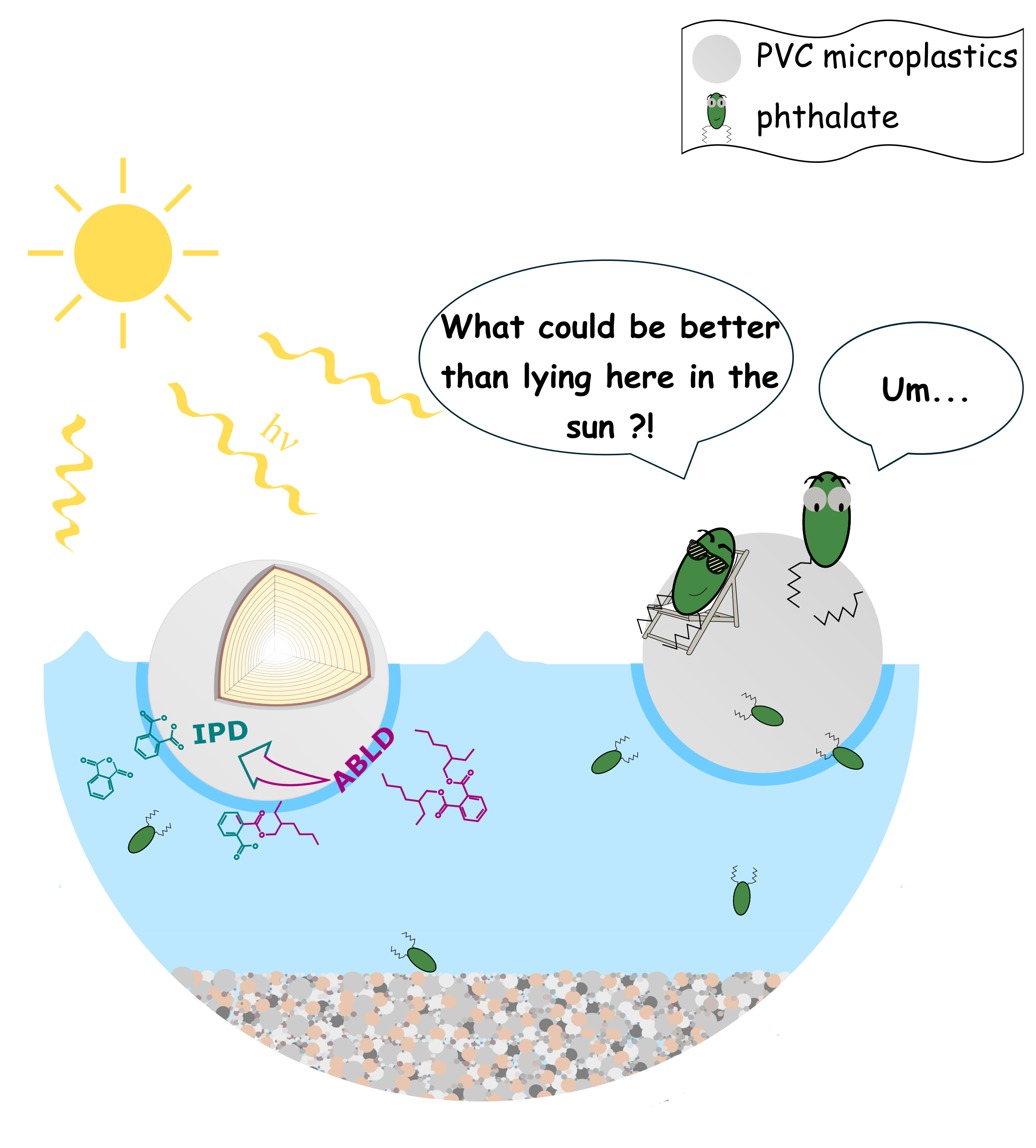Photoaging enhances the leaching of di(2-ethylhexyl) phthalate and transformation products from polyvinyl chloride microplastics into aquatic environments
Published in Chemistry and Earth & Environment

Abstract
The global chemical pollution of the environment is an issue of increasing public and scientific concern. Plastics and harmful additives released from plastics add to this burden. Phthalic acid esters (phthalates) are common plasticizers, which are particularly used in the manufacture of plastic items made of polyvinyl chloride (PVC). However, phthalates are endocrine disrupting chemicals (EDCs) and they are known to cause adverse health effects. Given that plastics are exposed to various environmental stressors during their service life and thereafter, understanding the impact of these factors on the leaching of phthalates from PVC (microplastics) is highly important to assess the (eco)toxicological risk, but not yet fully understood. Our research aimed to address this knowledge gap by elucidating the impact of photoaging on the leaching of phthalates and their transformation products into aquatic environments.
Our motivation to conduct the study
Hundreds of tons of plastic are released into the environment every year, and the trend is set to increase exponentially in the future. In the environment, plastics become subject to various environmental factors impacting their physical and chemical properties. Our previous studies at EDGE (Environmental Geosciences, University of Vienna) showed that environmental factors such as the given flow conditions in a water body as well as the water temperature, salinity and presence of dissolved organic matter play an important role for the release of additives, such as phthalates.1,2 Photoaging can lead to discoloring and embrittlement of plastic items – a process we can observe for everyday-life plastic items exposed to direct sun light. It is obvious that such changes not only impact the polymer properties, but might affect the release process of additives, too. But how, and to what extent? From a mechanistic point of view, this study was driven by the aim of understanding the interplay between polymer aging and transformation of phthalates, and their joint impact on the leaching process. From a broader perspective and with regard to human and aquatic life exposure, we sought to better understand the fate of plastics (and the additives they contain) in the aquatic environment, and the associated impacts.
To explore the effect of photoaging on the leaching of phthalates, we exposed PVC microplastics to UV irradiation under well defined laboratory conditions and identified key changes in the polymer properties. These microplastics were subsequently used to investigate the leaching of di(2-ethylhexyl) phthalate (DEHP), used as a model phthalate, and its most abundant transformation products mono(2-ethylhexyl) phthalate (MEHP), phthalic acid and phthalic anhydride into aqueous solutions. By combining the experimentally determined leaching kinetics with mass transfer modeling, we could identify the rate-limiting leaching process for each compound from photoaged PVC microplastics.
Key findings
Our results revealed that photoaging strongly enhances the leaching of DEHP from PVC microplastics and leads to the formation and enhanced release of (harmful) transformation products into aquatic environments. To assess the chemical pollution of the environment by additives emitted from plastics, our findings emphasize the necessity to account for the effects of environmental factors and to consider transformation processes for a holistic understanding of leaching kinetics and leaching processes. In terms of sustainable chemical management, our findings support the need to minimize the release of additives into the environment.

Figure 1. The effects of photoaging on phthalate leaching. On the left-hand side the influence of UV irradiation on the polymer properties of PVC and on the leaching process of DEHP (purple) and transformation products (purple to blue) is shown. The effects of phototransformation are illustrated on the right-hand side: While one phthalate is still enjoying the sun, the other phthalate is showing the first effects of phototransformation, i.e., dealkylation.
References
(1) Henkel, C.; Hüffer, T.; Hofmann, T. Polyvinyl Chloride Microplastics Leach Phthalates into the Aquatic Environment over Decades. Environ. Sci. Technol. 2022, 56, 14507–14516. https://doi.org/10.1021/acs.est.2c05108.
(2) Henkel, C.; Lamprecht, J.; Hüffer, T.; Hofmann, T. Environmental Factors Strongly Influence the Leaching of Di(2-Ethylhexyl) Phthalate from Polyvinyl Chloride Microplastics. Water Res. 2023, 242, 120235. https://doi.org/10.1016/j.watres.2023.120235.
Follow the Topic
-
Communications Chemistry

An open access journal from Nature Portfolio publishing high-quality research, reviews and commentary in all areas of the chemical sciences.
Related Collections
With Collections, you can get published faster and increase your visibility.
Advances in Polymer Synthesis
Publishing Model: Open Access
Deadline: Jan 31, 2026
f-block chemistry
Publishing Model: Open Access
Deadline: Feb 28, 2026




Please sign in or register for FREE
If you are a registered user on Research Communities by Springer Nature, please sign in